by Carl Hammington, Academic Director, HealthFit Collective.
We are inundated with questions and concerns around how to best go about exercising after contracting Covid-19. At HealthFit we’re taking this seriously as we’re responsible for people from all walks of life such as young athletes, injured clients and patients through to the immune compromised and elderly.
Research is still forming around ‘what to do’ but it seems to affect different people in different ways. Acute (early initial phases) to chronic (medium to long term) has the potential to have negative effects on many of our body’s systems and organs.
In terms of the longer, lingering effects, the virus does not discriminate. Many young, fit and healthy individuals are experiencing ‘long covid’. We’re playing the long game, and we feel like having clear guidelines around this is important to ensure the long term health for our members and clients.
Research suggests that a slow and patient approach when returning to exercise is crucial in minimising long term health consequences. We also understand that many enthusiastic people can’t wait to get back into exercise, wanting to regain fitness (and potentially reduce the waistline) from pre-viral infection. We fully encourage keeping active but let’s look at a sensible and informed approach.
We have designed a 6-step system below based on research and medical recommendations.
Before working your way through these stages please adhere the following:
“Listen to your body”
It is more important than ever, if the activity or exercise is exhausting you then regress to the previous stage or stop and consult a medical professional.
- Become aware of your breathing rate, chest flutters or anything else unusual - this can be useful.
- If you are finding a phase to be challenging in any way, then please stay on that phase until you feel like you are ready to progress.
- Please stick to the programming recommendations outlined in each stage.
- Chest pain or heart palpitations.
- Nauseous.
- Headache.
- High heart rate not proportional to exertion level or prolonged heart rate recovery.
- Feeling lightheaded or dizzy.
- Shortness of breath, difficulty catching breath or abnormal, rapid breathing.
- Excessive level of fatigue.
- Passing out
- Swelling in the extremities.
- Experiencing tunnel vision or loss of vision.
“Don’t push on through”
It's really important that you don't push through fatigue like you may have done pre-covid. Following a gradual progression is important and please be patient, you will eventually return to where you were (and beyond) but it's important for your long term health that you take your time and do it properly.
“Aid your immune system”
Mainly through rest, getting some sun when you can, and supplementing with immune-support - backed by research. It’s important there’s a focus on health through the next few weeks.

Phase 1: Rest is Key: During Covid-19 (isolation)
It is recommended that if you are 'positive' that you should fully rest for the isolation period unless cleared by your doctor. This doesn't matter whether your symptoms are mild or severe.
Many people experience only mild symptoms during Omicron however some can experience higher levels of fatigue and may feel exhausted during mild activity like walking or daily chores. What has been noted in the research is that It's important to listen to your body and not push through this fatigue at all during this time.
Phase 2: Low Intensity Exercise: Following Covid-19 Syndrome (2 days minimum)
Exercise in which::
- You can still comfortably breathe
- You can still converse easily
Keep exercise within these parameters:
- Your heart rate must not go above 70% of maximum heart rate
- Keep it to 15 minutes or less
Some examples of working in are:
- Gentle stretching, release work or mobility
- Mindful walk with easy terrain or intensity
- Qi gong or taichi
- A non intensive light yoga sequence
If attempting this, please remember that this must not feel exhausting and must fit the criteria above.

Phase 3: Low-moderate Exercise (2 days minimum)
- Walking with some terrain & challenge
- Longer and slightly more challenging yoga sequences
- Bodyweight strengthening
- Running drills
- Non-loaded HealthFit SGT classes if you follow the parameters below
Keep the exercise within these parameters:
- Your heart rate must not go above 80% of heart rate maximum
- Keep it under 30 minutes
Phase 4: Moderate Exercise (2 days minimum)
- Complex training - sports specific drills
- Weights training
- Running
- Complex circuit training
- HealthFit SGT classes if you follow the parameters below
Keep the exercise within these parameters:
- Your heart rate does not go above 80% of your heart rate maximum
- Keep it under 45 minutes
Phase 5: Moderate to Intense Exercise (2 days minimum)
- Normal activities but keep them non contact
- HealthFit SGT classes as normal but following the parameters below
Keep the exercise within these parameters:
- Your heart rate does not go above 80% of your heart rate maximum
- Keep it under 60 minutes
Phase 6: Return to Normal Activity
This is under the assumption that you have followed the stages outlined and the minimum time recommendations above.
This also assumes that you are progressing through the stages while taking note of the precautions, signs and symptoms outlined above.

Research Links:
https://www.bmj.com/content/372/bmj.m4721
https://www.ncbi.nlm.nih.gov/pmc/articles/PMC8156194/
https://journals.sagepub.com/doi/full/10.1177/14799731211015691
https://www.thelancet.com/journals/eclinm/article/PIIS2589-5370(21)00299-6/fulltext
https://pubmed.ncbi.nlm.nih.gov/34389297/
https://pubmed.ncbi.nlm.nih.gov/34952975/
https://physoc.onlinelibrary.wiley.com/doi/10.1113/EP089965
https://www.nytimes.com/2022/02/12/well/move/long-covid-exercise.html

